During the past three years, fairy tales have swept Hollywood by storm. Films and TV shows such as “Maleficent,” “Frozen,” “Once” and a whole host of other titles have whisked their way into theaters and thousands of living rooms across the globe. And there is no sign of this trend slowing any time soon. “Into the Woods,” staring Johnny Depp, and live-action full-length pictures of “Cinderella,” “Beauty and the Beast,” and “Pinocchio” are just some of the many films scheduled for release later this year.
The public’s fascination with these tales is age-old. However, the stories have heavily evolved during the past 80 years thanks in part to entertainment companies like Disney. The happily ever after’s that have been portrayed onscreen are in fact mostly absent in the original stories.
Almost six years ago I wrote a Gothic novel that retold “Little Red Riding Hood.” I was shocked after reading some of the original French stories, specifically aristocrat Charles Perrault’s take that predated the Grimms’ by some 115 years.
There is no woodcutter to save Red Riding Hood. Instead, she undresses, climbs into her grandmother’s bed, and is killed by the wolf who metaphorically “devours” her. Perrault’s “Red” was originally meant as a cautionary tale warning young women of men’s “wolfish” appetites and the dangers of losing their virtue. The story was specifically aimed at the promiscuous courtiers of the French Court of the 17th century.
Preserving but muting this message, the Grimms show Red’s mother cautioning her not to “stray from the forest path,” a reoccurring warning in many fairy tales. But what kind of story would it be if Red listened to her mother? Off that warned-of path is precisely where facilitator and gallery owner Julie Baroh of Krab Jab Studio wants to take art-goers.
Krab Jab Studios, along with guest curator Satyros Brucato, are featuring their exhibition, “The Dark Woods: The Roots of Fairy Tale” for all of those brave enough to venture into the shadowy wilds of the forest.
Established in 2010, Krab Jab is a working art studio/gallery in the funky, industrialized artist’s den of the Georgetown neighborhood in Seattle. The gallery hosts shows featuring art by local fantasy artists as well as works by publication and game illustrators worldwide.
It was my privilege to attend the exhibition that opened on August 9th and runs through September 5th. The pieces, including paintings, drawings, photography, and sculptures from around the world, were nothing short of enchanting. Many young maidens were surrounded by memorably fairy tale iconography. Thorns, apples, red hoods – each were represented with its own ominous spin.
“We wanted to get away from the pretty and get into the gritty,” said guest curator Satyros Brucato. Brucato explained to visitors that all the pieces revolve around taking the viewer on a journey, almost a “vision quest,” into the woods to meet familiar characters who make up the well-known fairy tale landscape. “The Dark Woods” at its core is a metaphor for the dense brambles of the unconscious. This is a place to explore the deeper layers inside one’s self and also serves as an area to bring people out of their comfort zone, making it a ripe space for transformation.
Baroh concurred, also delving into the frightening, generalized mythology of the woods. “Wild animals, dark spaces, travelers losing their way, robbers, and ideas of magical spirits all posed a real threat as well as fascination to humanity for many centuries.”
I was able to catch up with Baroh to ask a few short questions about the exhibition and learn a little more about the spritely dark haired maven behind one of the most prestigious fantasy art galleries in the U.S.
Welcome, Julie! Thanks for taking the time to speak with me today.
Q. What was your inspiration behind the “Dark Woods” exhibition? How did it come to be?
A. Originally it started with a conversation I had with an artist, in response to a piece called “Just One Bite,” by Tory Taber. I pointed out that there was a sensuousness to it that was both riveting and discomforting. We then talked about how scrubbed down so many fairy tales have become over the years, starting with the early part of the Victorian era and the expansion of the Industrial Revolution. The belief and strength of the old folk ways died out.
I was also intrigued with the mystery of the forest. Forests represented the untamed, the subconscious (much like the ocean), the place most people did not venture alone or at night. Many of our most epic fairy tales take place within the forest.
Q. What was your favorite fairy tale as a child? Has this fairy tale played a particular role in your own work?
A. Well, I really loved “Hansel and Gretel,” especially when paired with Engelbert Humperdinck’s opera composition, which I had the record and played on my tiny portable record player. I also loved “The Snow Queen” – so epic!
I had (and still have) a Hans Christian Andersen storybook with illustrations by Arthur Rackham, which I loved and emulated in my own work. There was humor in his work that kept it from getting overly simpering, and his quality of line was truth. You can’t be an illustrator and not be affected by Rackham, you have to be dead inside otherwise.
Art aside, I think these stories are archetypal in a very similar vein: the girl saves the boy. Gerda had to go through a lot more than Gretel, but both were heroic in nature. I wrote a children’s story (with the intention of eventually illustrating) a few years ago following a similar structure.
Q. Why do you think fairy tales continue to hold such a fascination for many?
A. It’s a place where children can be real – things are really dangerous, creepy, wonderful, magical. It triggers magical thinking, that part of the brain in which the absurd reigns supreme, animals can talk, fish dance, goblins give chase, and everything is as beautiful or ugly as you wish. Castles, horses, knights, fairies, queens, trolls – they’re all there, at your beck and call. And as absurd as they can be, fairy tales impart wisdom that we not only accept at face value, but the wisdom sinks beyond the dermis and into our bones.
You can tell someone about the value of loyalty, or you can tell them a tale about a knight. and the little boy who saves him and becomes king. Odds are they’ll remember the tale far longer – it leaves a far richer legacy.
Q. What is your vision for the studio in the future? What is the next exhibition on the horizon? Also, I heard a rumor that KJ might begin showing films.
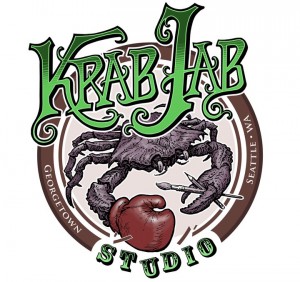 A. My sister will be joining me in 2015 to help run the gallery – it’s a lot of work for one person! Meanwhile, we have an encore showing of some of the work from A/NT Gallery’s group show “Pain: An Artistic Expression”, which shows artists’ personal description of pain within their artwork. It’s very somber and moving, and will open September 13th at 6 pm (show runs through to October 3rd). After that we will have a show highlighting the work of illustrator Allen Williams, supported by Rodrigo Luff, Olivier Villoingt, Yoann Lossel, Virginie Ropars, Forest Rogers and local painter Kyle Abernethy. November is a show with Todd Lockwood, and December is with Terese Nielsen, both exceptional fantasy artists.
A. My sister will be joining me in 2015 to help run the gallery – it’s a lot of work for one person! Meanwhile, we have an encore showing of some of the work from A/NT Gallery’s group show “Pain: An Artistic Expression”, which shows artists’ personal description of pain within their artwork. It’s very somber and moving, and will open September 13th at 6 pm (show runs through to October 3rd). After that we will have a show highlighting the work of illustrator Allen Williams, supported by Rodrigo Luff, Olivier Villoingt, Yoann Lossel, Virginie Ropars, Forest Rogers and local painter Kyle Abernethy. November is a show with Todd Lockwood, and December is with Terese Nielsen, both exceptional fantasy artists.
I see the future of both the studio and the industry to lean further into both digital and entertainment – in essence, away from tangible objects and more into the world of experience. This doesn’t mean I’m ditching traditional art at all, but it does mean I look to embrace the future of illustration, be it multimedia exhibits (art combined with music or technology) to showing film work (like animation, stop motion, puppetry). My first plan of action is to get Toby Froud to have an evening of movies up at the gallery, to show his work (“Lessons Learned”) as well as puppetry film that inspired it. From there, hopefully more film nights!
Q. Do you have openings for artists to rent spaces at this time?
A. Actually we do have a spot available for rent starting September. The work spaces are separate from the gallery (literally- there is a wall between them and the gallery space) and they’re not private or closed off from each other, but that’s what makes being a Krab Jabber so much fun. Plus, Georgetown is such a great neighborhood, and we’re right in the heart of it. We are open to illustrators, writers, and artists (painters, tabletop sculptors – we can’t have fumes or big messes).
*******
That sounds fantastic, and I’m looking forward to more upcoming exhibitions!
For those of you who live in Seattle or are passing through the city before September 5th, venture down to Krab Jab Studio to feast your eyes upon their “Dark Woods” exhibition. Just make sure to bring some breadcrumbs with you if you are intent on finding your way back home.

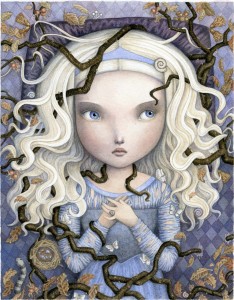
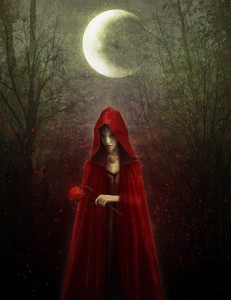
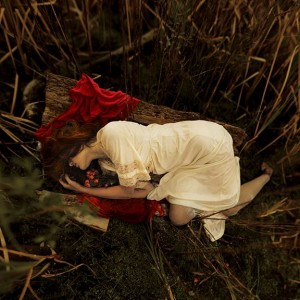
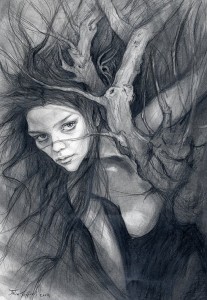
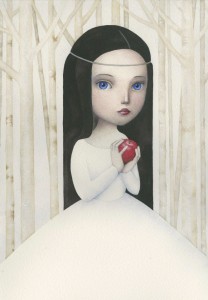
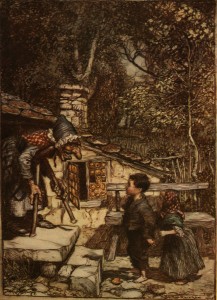
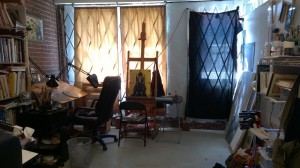
Leave a Reply